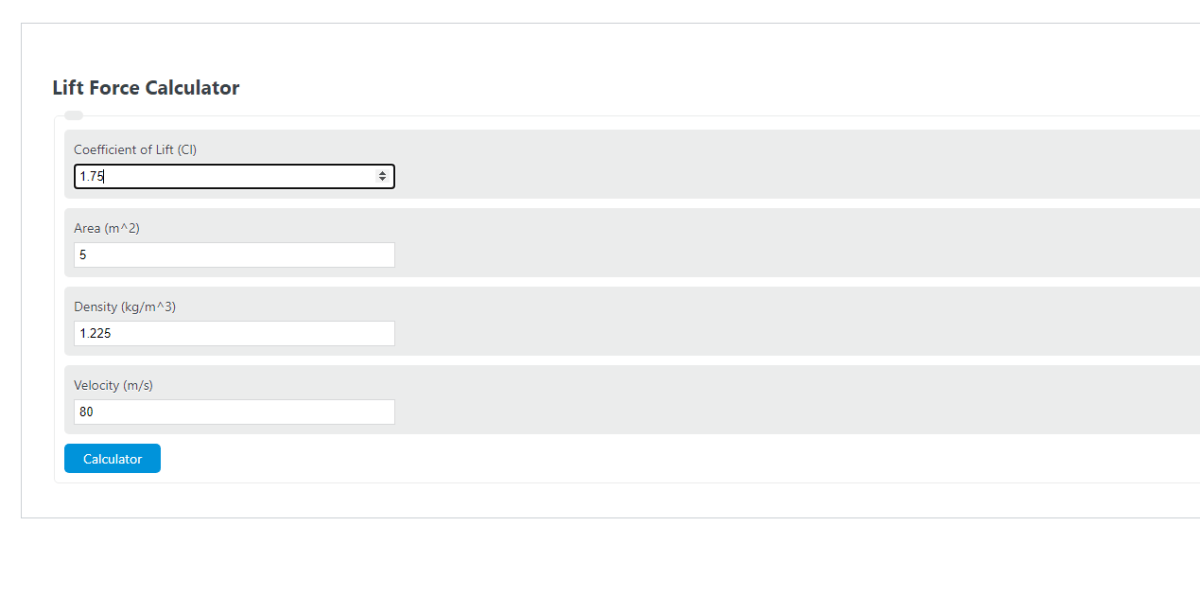Enter the coefficient of lift, wing area, density, and velocity into the calculator to determine the force of lift.
- Drag Coefficient Calculator
- Stall Speed Calculator
- Glide Ratio Calculator
- Wing Area Calculator
- Takeoff Velocity Calculator
- Lift Energy Calculator
Lift Force Formula
The following formula is used to calculate the lift force of an aero-wing.
Fl = Cl *A*(d*V^2)/2
- Where FL is the force due to lift
- A is the wing surface area
- d is the density of the air
- V is the veloicty of the wing through the air
Lift Force Definition
A lift force is a force that is exerted on an object that is moving through a fluid. As the object moves through the fluid, two components of force arise.
One of these is parallel and opposite to the flow of the object. This is known as a drag force. This force will force the object to slow down.
The other component of force is one that is perpendicular to the flow of the object. This component is known as the lift force.
The lift force is generated as a result of the object creating a difference in airspeed along opposite sides of the object. That difference in airspeed creates a pressure differential and thus a force as the air tries to equalize its pressure.
Example Problem
How to calculate a lift force?
In this example, we will explore the lift force exerted on an airplane wing. While the lift is very dependent on body shape, inclination, air viscosity, and compressibility, these are all factors taken into consideration with the coefficient of lift (which is usually calculated experimentally.)
First, the coefficient of lift is determined to be 1.75.
Next, the density of the air must be determined. For this example, we will say the air is at standard pressure and density, so, the density is 1.225kg/m^3.
Next, the area of the wing is calculated. In this problem, the wing area is found to be 5m^3.
Next, the velocity of the airplane must be measured. We will use the average take-off speed of an airplane of 80m/s.
Finally, calculate the lift force using the formula above.
Fl = Cl *A*(d*V^2)/2
= 1.75*5*((1.225*80^2)/2)
= 34,300 N
